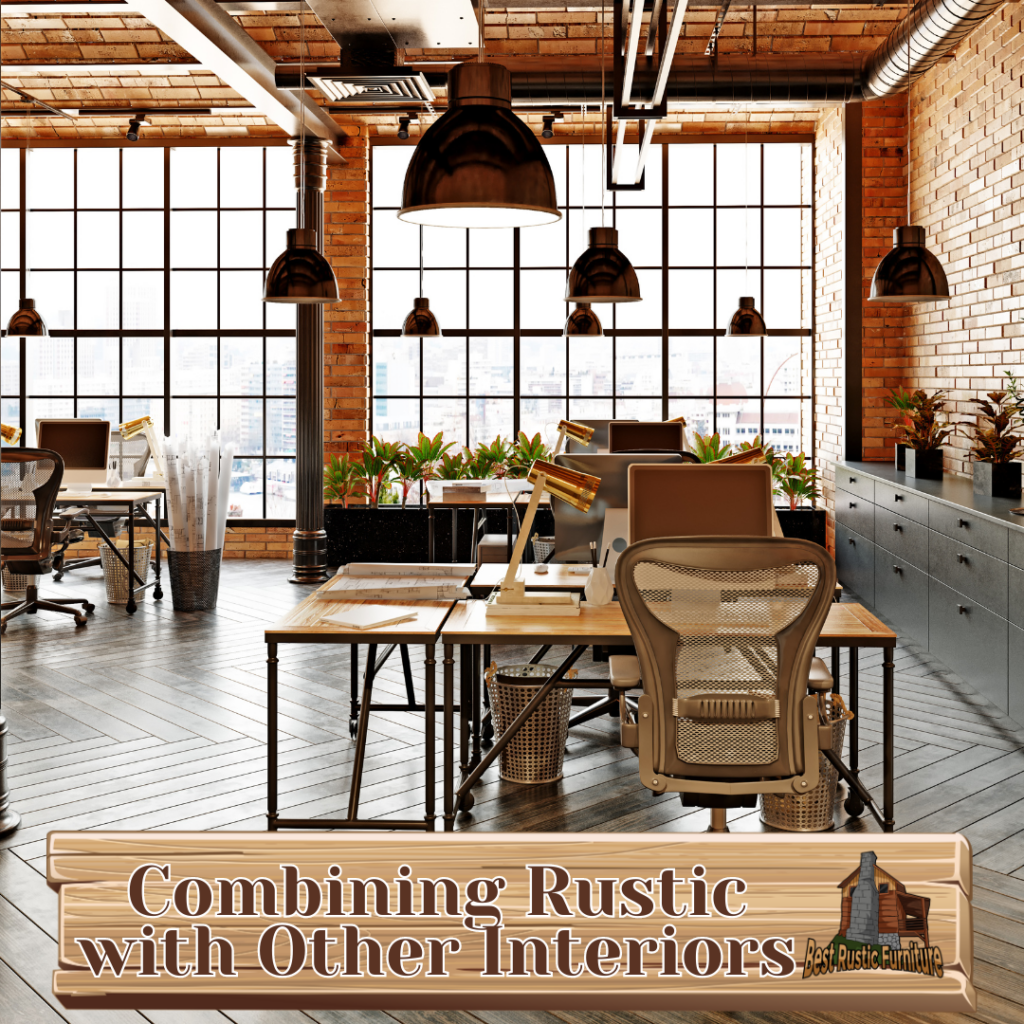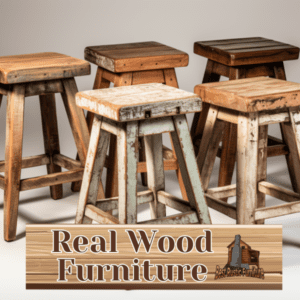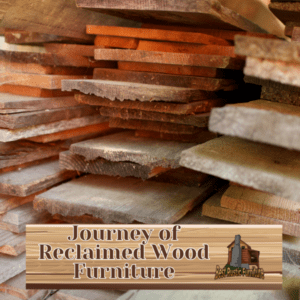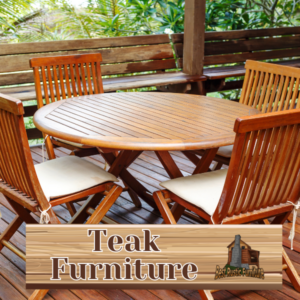
Melding different design aesthetics can create a unique and captivating interior space, and one such combination that is gaining popularity is combining rustic with other interior aesthetics. Rustic interior design brings a raw and natural charm, while other aesthetics like minimalist, industrial, Scandinavian, and bohemian offer their own distinct styles and influences. By understanding the elements and defining features of each style, it becomes possible to identify common ground and explore possibilities for incorporating rustic elements into other aesthetics. Achieving balance and cohesion is key, and it can be done by selecting key pieces, harmonizing colors and textures, and creating a focal point. By seamlessly blending rustic with other interior aesthetics, one can achieve a harmonious and visually stunning living space that reflects their personal style.
Key takeaways:
- Mixing rustic with other interior aesthetics creates a unique and personalized design: By combining rustic elements with other interior aesthetics such as minimalist, industrial, Scandinavian, or bohemian, you can create a space that reflects your individual style and taste.
- Find common ground through natural materials and neutral color palettes: Incorporating natural materials like wood and stone, as well as using neutral color palettes, helps to bridge the gap between rustic and other interior aesthetics, creating a harmonious and cohesive design.
- Creating balance and cohesion is key: Selecting key pieces that blend the rustic and other aesthetics, harmonizing colors and textures, and creating a focal point in the space are essential steps in achieving a balanced and cohesive design when melding rustic with other interior aesthetics.
Melding Designs: Combining Rustic with Other Interior Aesthetics
Combining rustic with other interior aesthetics can create a unique and visually appealing design. Melding designs effectively involves finding a balance between rustic elements and other aesthetics to avoid overwhelming the space. One tip is to incorporate contrasting elements, such as pairing a rough-hewn wooden table with sleek modern chairs. Another tip is to blend different textures, like mixing exposed brick walls with plush velvet upholstery. Additionally, it’s important to choose a cohesive color palette that complements both rustic and other aesthetic elements. Ultimately, remember to let your personal taste and style guide the process, creating a space that reflects your unique personality.
Understanding Rustic Interior Design
Understanding Rustic Interior Design is crucial when creating a warm and cozy atmosphere in a space. Rustic interior design embraces natural and rugged elements, drawing inspiration from nature. It incorporates raw materials such as wood, stone, and metal, resulting in a beautiful, timeless aesthetic. The color palette of rustic design is earthy and neutral, with warm tones dominating. Handcrafted furniture with a distressed or weathered appearance is commonly found in rustic spaces. Fabrics like wool, linen, and leather add to the rustic charm. This design style values simplicity and functionality while celebrating imperfections and showcasing the beauty of natural textures.
What Defines Rustic Interior Design?
What Defines Rustic Interior Design?
Rustic interior design is defined by several key elements that create a warm and inviting atmosphere, inspired by nature and the simplicity of rural living. Incorporating these elements will help you achieve the desired rustic ambiance:
1. Natural Materials: One of the defining features of rustic interior design is the use of natural materials such as wood, stone, and natural fibers. By incorporating these organic elements, you can bring an earthy and authentic feel to your space.
2. Neutral Color Palette: To evoke a rustic ambiance, it is essential to utilize warm and earthy tones like browns, beiges, and greens. These colors create a soothing and natural backdrop for your interior design.
3. Cozy and Comfortable: Creating a cozy and inviting space is another characteristic of rustic interior design. To achieve this, consider using plush furniture, soft textiles, and warm lighting. These elements will help create a comfortable atmosphere where you can relax and unwind.
4. Vintage and Handcrafted Pieces: To add a sense of authenticity and nostalgia to your rustic interior design, incorporate antique or handcrafted furniture and decor items. These unique pieces will add character and charm to your space.
5. Connection to Nature: Rustic interior design is all about bringing the outdoors inside. Incorporate natural elements like plants, botanical prints, and rustic accessories to create a strong connection with nature. This will enhance the overall rustic look and feel of your interior design.
To further enhance the rustic look, consider opting for distressed or weathered finishes on your furniture. Additionally, experiment with incorporating salvaged materials into your design to add a touch of uniqueness and character.
Elements of Rustic Interior Design
Rustic interior design embraces natural elements, incorporating wood, stone, and natural fibers such as jute and linen for furniture, flooring, and decor. The key elements of rustic interior design include the use of a warm color palette with earthy tones like browns, tans, and greens to create a cozy and welcoming atmosphere. Additionally, rustic textures like distressed wood, rough stone, and woven fabrics are employed to add depth and character. Vintage and antique pieces are also integrated into the design to add a sense of history and authenticity.
To illustrate, I once visited a rustic cabin nestled in the mountains that perfectly exemplified the elements of rustic interior design. The interior was adorned with wooden beams, a stone fireplace, and cozy furniture made from reclaimed wood. The warm colors and natural textures created a rustic ambiance that beautifully complemented the surrounding nature.
Exploring Other Interior Aesthetics
Get ready to dive into a world of interior aesthetics beyond the rustic! In this section, we’ll explore various other design styles that can beautifully blend with rustic elements. From the clean lines of minimalist interior design to the raw and edgy vibes of industrial design, we’ll uncover how each sub-section, including Scandinavian and bohemian design, brings its own unique charm to create stunning and harmonious living spaces. So, buckle up and prepare to be inspired by the captivating fusion of rustic with other interior aesthetics!
1. Minimalist Interior Design
Minimalist interior design is characterized by simplicity, clean lines, and a focus on functionality. To incorporate minimalist interior design elements into a rustic aesthetic, consider the following:
- Streamline Furniture: Opt for minimalistic furniture with sleek silhouettes and neutral colors.
- Neutral Color Palette: Stick to a muted color scheme, such as whites, creams, and light grays, to achieve a minimalist look.
- Declutter: Clear out unnecessary items and keep only essential elements to maintain a minimalist feel.
- Natural Materials: Use rustic materials like wood and stone in a minimalistic way, such as incorporating them as accents or focal points.
Fact: Minimalist interior design focuses on the principle of “less is more,” promoting a clutter-free and serene living environment.
2. Industrial Interior Design
Industrial interior design combines raw and rough elements with sleek and modern touches to create a unique aesthetic. Key features of industrial design include exposed brick walls, metal accents, and open spaces. Here are some ways to incorporate industrial design into your interior:
1. Industrial Lighting: Use pendant lights with metal or exposed bulb designs to add a touch of industrial flair to your space.
2. Industrial Interior Design: Incorporate reclaimed wood, metal, or concrete in furniture and decor pieces to bring an industrial feel.
3. Minimalist Color Palette: Stick to neutral tones like gray, black, and white for a clean and industrial look.
4. Open Floor Plan: Embrace open spaces with minimal partition walls to achieve an industrial loft-like atmosphere.
Remember, achieving the perfect blend of industrial design with other aesthetics requires balance and cohesion. Experiment with different elements and find a combination that reflects your personal style.
3. Scandinavian Interior Design
Scandinavian interior design is known for its simplicity, functionality, and minimalism, creating bright and airy spaces using natural materials and neutral color palettes. To incorporate rustic elements into Scandinavian design, here are some suggestions:
- Utilize reclaimed wood: Enhance the rustic charm by incorporating reclaimed wood accents, such as a barn door or wooden beams.
- Introduce texture: Add cozy rugs, faux fur throws, or knitted cushions to bring in texture and create a warm and inviting atmosphere.
- Combine old and new: Create an eclectic and unique look by mixing rustic, vintage pieces with modern Scandinavian furniture.
- Add greenery: Bring the freshness of nature indoors by including potted plants or hanging planters, adding a touch of rustic charm.
4. Bohemian Interior Design
Bohemian interior design embodies a free-spirited and eclectic style, integrating elements from various cultures and eras. Here are some essential characteristics of bohemian interior design:
- Layered textures: Embrace a combination of natural materials like rattan, jute, and macrame to create a cozy and bohemian atmosphere.
- Vibrant colors: Incorporate deep blues, fiery reds, and earthy tones to infuse energy and personality into your space.
- Plants and greenery: Bring the beauty of nature inside by adorning your space with lush plants and greenery, creating an inviting and fresh ambiance.
- Global-inspired decor: Enrich your space with textiles, patterns, and objects from different cultures and countries, adding diversity and opulence.
- Relaxed seating: Opt for floor cushions, poufs, and hammocks as low and comfortable seating options to establish a laid-back and bohemian vibe.
Pro-tip: Fearlessly mix and match varying patterns, textures, and colors to curate a bohemian interior that mirrors your unique style and personality.
Identifying Common Ground
Discover the magic of blending rustic elements with other interior aesthetics as we delve into the section on “Identifying Common Ground”. In this exciting exploration, we will uncover the beauty of incorporating natural materials and textures, while also delving into the allure of neutral color palettes. Get ready to unlock the secrets of harmoniously melding designs and creating a captivating ambiance that seamlessly merges different styles and inspirations.
1. Natural Materials and Textures
To create a warm and organic atmosphere in rustic interior design, incorporating natural materials and textures is essential. If you want to bring these elements into your home, consider the following:
- Utilize reclaimed or distressed wood for furniture, flooring, and accent pieces to embrace the beauty of wood.
- Incorporate natural stone, such as granite or slate, for countertops or feature walls, adding an earthy touch.
- Choose natural fibers like linen, cotton, or wool for upholstery and curtains to enhance the authenticity of the space.
- Embrace rough textures like exposed brick, rough-hewn beams, or woven baskets to create a sense of rustic charm.
Let me share a true story:
A couple wanted to renovate their farmhouse while preserving its rustic charm. By opting for wooden furniture, a stone fireplace, and woven straw rugs, they successfully incorporated natural materials and textures. The end result was a cozy and inviting space that truly reflected their love for the outdoors.
2. Neutral Color Palettes
Neutral color palettes are a fundamental aspect of rustic interior design, as they play a crucial role in creating a serene and inviting atmosphere. In order to achieve the desired effect, it is important to take into account the following key points:
- Warm neutrals: Incorporating warm neutrals like beige, cream, and warm greys can significantly contribute to establishing a cozy ambiance in a rustic space.
- Earthy tones: To enhance the rustic look, it is essential to incorporate natural, earthy colors such as browns and greens.
- Textured neutrals: By incorporating texture, neutral colors can gain depth and visual interest. Materials like wood, stone, and woven textiles can be utilized to achieve this effect.
- Accent colors: In order to prevent the space from feeling monotonous, it is important to introduce pops of color through accessories, such as pillows or artwork, in shades that complement the neutral palette.
Incorporating Rustic Elements into Other Interior Aesthetics
Are you looking to add a touch of rustic charm to your home? In this section, we’ll dive into the art of incorporating rustic elements into other interior aesthetics. From blending rustic with minimalist design to combining it with industrial style, we’ll explore various ways you can meld rustic with other design concepts. Whether you’re drawn to the clean lines of Scandinavian design or the eclectic vibe of bohemian elements, we’ve got you covered. Get ready to discover the perfect fusion of rustic and your favorite interior aesthetics.
1. Blending Rustic and Minimalist Design
To create a harmonious and serene space, it is important to blend rustic and minimalist design. Here are some helpful tips to achieve this aesthetic:
- Simplify: Embrace minimalism’s focus on simplicity by keeping the overall design clean and free of clutter.
- Neutral color palette: To create a sense of calm and warmth, stick to a neutral color scheme, such as white, beige, or gray.
- Natural materials: Bring warmth and texture to the minimalist space by incorporating rustic elements like reclaimed wood, stone, or exposed beams.
- Functional furniture: Choose sleek and functional furniture pieces that fit the minimalist style while also embracing natural and rustic materials.
- Balance: Find a balance between the two aesthetics by combining clean lines and simplicity with the warmth and texture of rustic elements.
2. Combining Rustic and Industrial Design
Incorporating elements from both rustic and industrial design can result in a one-of-a-kind and fashionable interior aesthetic. To successfully achieve this fusion, consider the following suggestions:
- Integrate materials: To infuse an industrial feel into rustic spaces, incorporate elements such as exposed brick, reclaimed wood, and metal accents.
- Select furniture wisely: Seamlessly blend the two styles by combining vintage industrial pieces with rugged wooden furniture.
- Opt for appropriate lighting: Add an urban touch to the rustic ambiance by choosing industrial-style lighting fixtures like pendant lights or exposed bulbs.
- Play with colors: Stick to neutral tones like earthy browns and grays for your color palette. To create contrast, consider incorporating pops of industrial colors such as black and metallics.
Pro tip: Achieving balance is crucial when merging these styles. Strive to find the perfect mix of rustic warmth and industrial edge to create a visually appealing and harmonious space.
3. Infusing Rustic into Scandinavian Design
Infusing rustic elements into Scandinavian design can create a warm and inviting space that combines the simplicity of Scandinavian style with the charm of rustic elements. Achieving this fusion is possible through these steps:
1. Incorporate natural materials such as wood and stone into your Scandinavian interior. By adding rustic textures and warmth, you enhance the authenticity of the design. 2. Maintain the simplicity of Scandinavian style by using rustic furniture pieces that feature clean lines and minimalist design. This way, you preserve the core essence of Scandinavian design while introducing rustic elements. 3. To bring a rustic touch to your Scandinavian space, consider adding accents like woven baskets, vintage rugs, or antler decorations. These elements infuse your space with a hint of rusticity without overpowering the overall design. 4. Select a neutral color palette with earthy tones, reminiscent of nature. This helps to create a cohesive look that complements both the rustic and Scandinavian elements. 5. Strike a balance between the clean lines of Scandinavian design and the cozy, lived-in feel of rustic elements. This juxtaposition adds depth and character to your space. By combining these two aesthetics, you can achieve a harmonious and balanced space that is not only modern but also inviting. This design reflects your personal style and taste, showcasing your ability to seamlessly blend rustic elements into Scandinavian design.
4. Merging Rustic and Bohemian Elements
To achieve a perfect blend between rustic and bohemian interior design, you can follow these guidelines:
- Incorporate natural materials like reclaimed wood and rattan furniture to infuse rustic charm.
- Add pops of vibrant colors and intricate patterns through bohemian textiles, such as Moroccan rugs or embroidered throw pillows.
- Create a boho vibe by mixing vintage and eclectic accessories, including macrame wall hangings and antiques.
- Add plants and greenery to bring a fresh and natural atmosphere to the space.
- Combine different textures, for example, pair a distressed leather sofa with plush velvet cushions.
Fact: By merging rustic and bohemian elements, you can create an inviting and unique space that exudes coziness and eclecticism.
Achieving Balance and Cohesion
Find the sweet spot where rustic charm meets modern elegance in achieving balance and cohesion in your interior design. Dive into the art of melding designs and discover how selecting key pieces, harmonizing colors and textures, and creating a focal point can transform your space into a harmonious and inviting sanctuary. Get ready to harness the power of contrast and create a home that seamlessly combines the best of both worlds.
1. Selecting Key Pieces
Selecting key pieces is crucial when combining rustic with other interior aesthetics. Carefully choose a farmhouse dining table as the centerpiece, accompanied by a curated collection of mismatched vintage chairs for an eclectic touch. Embrace the rustic charm by incorporating natural wood furniture, such as a reclaimed wood coffee table or a distressed wooden console. Elevate the cozy ambiance with the addition of a plush wool rug or a cowhide rug. Complete the rustic look by accessorizing with decorative items like wrought-iron wall sconces or antique lanterns. To bring in a touch of nature, place potted plants, fresh flowers, or botanical prints throughout the space. Achieving a harmonious blend is possible by selecting and curating these essential key pieces.
2. Harmonizing Colors and Textures
To achieve a cohesive and balanced design when combining rustic with other interior aesthetics, harmonizing colors and textures is crucial. Here are some valuable tips on how to achieve this:
- Choose a color palette that complements both the rustic and the other aesthetic. For instance, if you’re blending rustic with minimalist design, opt for neutral tones like whites, grays, and earthy hues.
- Integrate textures that create harmony between the rustic and the other aesthetic. Incorporate natural materials like reclaimed wood, stone, or exposed brick walls, as they can add depth and character to the space.
- Use fabric and textiles to tie together different elements. Mix and match patterns and textures that seamlessly blend the rustic and the other aesthetic. For example, pairing a cozy, plaid throw blanket with sleek, minimalist furniture can create an intriguing contrast.
In summary, by selecting a harmonious color palette, integrating complementary textures, and strategically using fabric and textiles, you can successfully merge rustic elements with other interior aesthetics.
Now, let’s explore a captivating history about harmonizing colors and textures. During the early Renaissance period, artists aimed to achieve harmony in their artworks by carefully selecting colors and textures. They embraced the concept of “sfumato,” which involved seamlessly blending colors to create subtle transitions and merging different textures to add depth and interest. Leonardo da Vinci was an exemplary artist who demonstrated this harmonization. He is renowned for his mastery of color and texture in iconic paintings such as the Mona Lisa. Through his meticulous combination of colors and textures, he created a captivating visual experience, establishing the foundation for harmonizing colors and textures in interior design.
3. Creating a Focal Point
To effectively create a focal point in a rustic interior design, it is important to consider the incorporation of a standout element that naturally draws attention. One possible option is to include a large statement piece like a reclaimed wood fireplace or a vintage chandelier. Another approach is to introduce bold colors or patterns on a single wall or furniture piece. By strategically arranging furniture and décor in a manner that directs focus towards a specific area, it is possible to establish a noticeable focal point. Carefully selecting and positioning key elements will not only highlight the desired area but also add visual interest to your rustic interior design.
Facts About “Melding Designs: Combining Rustic with Other Interior Aesthetics”:
- ✅ The rustic-industrial design style achieves aesthetic balance by blending exposed steel and rustic wood. (Source: Review Journal)
- ✅ The industrial design trend has led to a rebirth in furniture, fixtures, and lighting. (Source: Review Journal)
- ✅ Steampunk, a combination of machinery and elegance, is closely aligned with the rustic-industrial look and is starting to infiltrate interior design. (Source: Review Journal)
- ✅ Lighting plays a key role in the rustic-industrial style, with vintage and modern geometric designs featuring brushed or grainy steel. (Source: Review Journal)
- ✅ Rustic color schemes are popular in the rustic-industrial style, with neutral and muted colors, such as cream, brown, and metallic tones. (Source: Review Journal)
Frequently Asked Questions
1. How can expert designers effectively combine rustic elements with other interior aesthetics?
Expert designers can effectively combine rustic elements with other interior aesthetics by blending organic and engineered materials, incorporating contrasting textures, and using copper accents as a unifying element.
2. What are some classic design pairings that work well with rustic style?
Some classic design pairings that work well with rustic style include farmhouse and coastal, modern and traditional, and bohemian and mid-century modern.
3. How can I achieve aesthetic balance when combining rustic elements with other design styles?
To achieve aesthetic balance, it is important to consider scale and proportion, mix contemporary style with older architectural details, and use earth tones as a cohesive color palette.
4. What are some essential design styles that can be blended with rustic elements?
Some essential design styles that can be blended with rustic elements include modern, midcentury modern, and art deco.
5. What are some popular design elements in rustic-industrial design?
Popular design elements in rustic-industrial design include exposed steel, raw and unfinished wood, vintage lighting fixtures, and leather or linen-upholstered furniture.
6. How can I achieve a seamless melding of rustic and other interior aesthetics in my home?
To achieve a seamless melding of rustic and other interior aesthetics, consider incorporating industrial elements, mixing solid colors with contrasting textures, and incorporating signature design elements that reflect your personal style.






